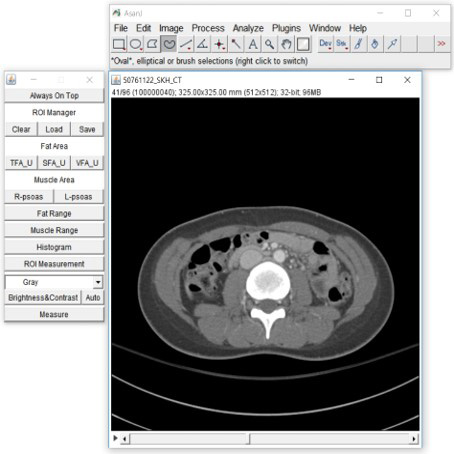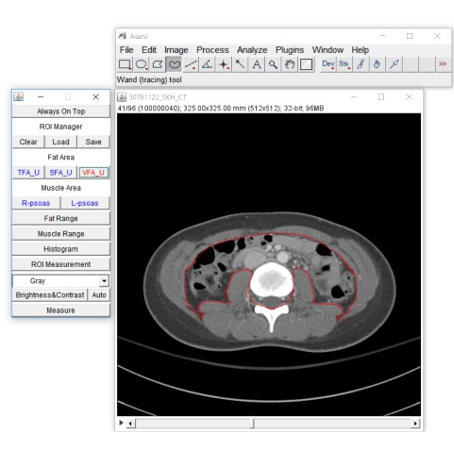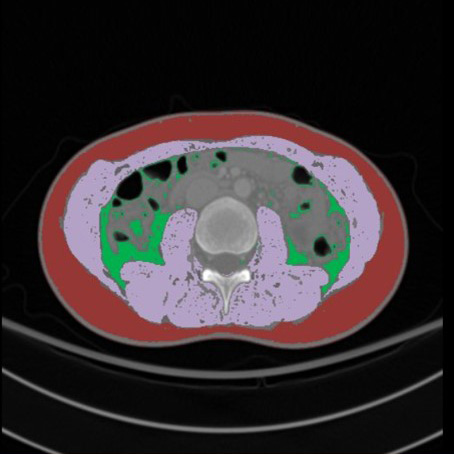Academic Share
Central Imaging Core Lab
Sharing of AsanJ-Morphometry software
* Please refer to the above video manuals/instructions
1. Background
-
The assessment of muscle and fat tissues is essential in the management of patients with obesity, aging,
and wasting diseases. The decreased muscle mass is associated with sarcopenia, and the increased body fat is associated with metabolic syndrome.
Recent accumulating evidence strongly suggests that sarcopenia is predictive of certain clinical outcomes including postoperative complications, hospital stay, and final survival/mortality in various diseases. -
Cross-sectional imaging techniques such as CT and MRI are regarded as the most reliable methods for
quantifying the total abdominal muscle area (TAMA), visceral fat area (VFA), and subcutaneous fat area (SFA).
These quantifications require a special image post-processing software.
2. Development of AsanJ-Morphometry software
-
Our team developed the AsanJ-MorphometryTM software which is dedicated software for abdominal muscle
and fat area measurements based on ImageJ (NIH, Bethesda, MD, USA).
We would provide our software to the public for non-profit research purpose. - Using predetermined thresholds for the Hounsfield unit (HU) on CT and the signal intensity (SI) on precontrast T1-weighted MRI, the TAMA (cm2) including all muscles on the selected axial images, i.e., psoas, paraspinal, transversus abdominis, rectus abdominis, quadratus lumborum, and internal and external obliques is demarcated.The VFA (cm2) and the subcutaneous fat area (SFA) (cm2) are also demarcated using the fat tissue thresholds in CT/MRI.
- Currently, the measurement level of abdominal muscle mass has not been standardized, varying from L2 to L4 vertebrae. Of these, the L3 inferior endplate level has been most commonly used in majority of prior studies.
3. Manual to use AsanJ-Morphometry software
- Run the AsanJ-Morphometry software and then upload the target CT or MRI images
- Check the default setting of the thresholds. If necessary, adjust the thresholds of the total abdominal muscle area (TAMA), subcutaneous fat area (SFA), and visceral fat area (VFA)
- Draw the boundary of between the visceral fat and total abdominal muscle area.
-
Check the automatically drawn the regions of interest. If necessary, adjust the ROIs.
Then, the software will provide the TAMA, VFA, and SFA.
A

B

C

D
